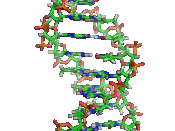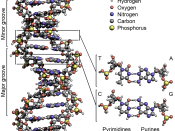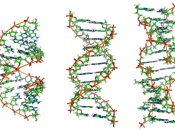To understand the DNA Database you have to understand all the ideas implemented with it. "DNA is the commonly known abbreviation for deoxyribonucleic acid, the genetic material found in the nucleus of all cells in living organism. It is often referred to as the blueprint of life because it contains the information needed to give us our physical characteristics and functional abilities" (Puri, n.d., para. 10). In other words, DNA is like a fingerprint. It can be used to identify a person with just a strand of hair. This has become a tool in the justice system to identify criminals and helps put them in jail. The Justice Department is currently looking to expand the national DNA Database. Most people can certainly understand the great things that this can do but do we really see the big picture? The idea of a DNA database seems like a perfect idea to some but, is the good of helping catch criminals more important than peoples civil liberties including taking DNA before a convection or their fourth amendment rights (unreasonable search and seizure).
Not long into the DNA revolution of criminal prosecuting, the idea that a database could and should be established to help speed up the process was found. Instead of simply using DNA sample evidence on a case-by-case basis, DNA databanks allow investigators to use the information on a grand scale and use the samples for multiple ongoing investigations (Puri, n.d.). This was a great step in law enforcement. "Since April 1995, the British have gathered DNA profiles of more than 500,000 criminals--the number grows weekly--and police have linked 70,000 suspects to crimes through their DNA"( Safir, 2000, para. 18 ). Just the thought that the streets are safer makes everyone happy. In the article, Expand Database Carefully (USA Today...


